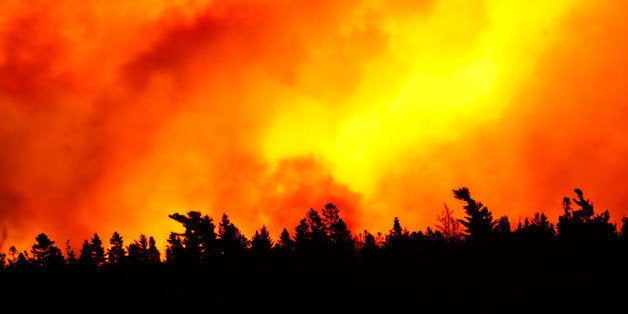
After five years of punishing drought, I am more fearful than ever that increasingly destructive and unpredictable fires will exceed our capacity to put them out quickly and protect the lives and property of Californians. And the odds are high that the state will continue to grapple with extreme fire seasons long after the current drought ends.
During my travels in California, I have seen firsthand the enormous number of trees that have been killed by drought and bark beetle infestations. The U.S. Forest Service estimates that there are 66 million dead trees on our state's public lands, half of which are concentrated in the Sequoia, Sierra and Stanislaus national forests.
The lack of water, combined with the proliferation of tree-killing beetles that thrive in dry conditions, has created a tree mortality crisis unlike any we've seen in recent decades. But this growing public-safety threat has not received the attention or resources it deserves. That needs to change.
Despite the fact that our traditional fall fire season is just beginning, California already has faced more than 5,000 fires this year, burning nearly 500,000 acres, resulting in seven fatalities and destroying more than 1,270 homes and other structures. More than 12,000 firefighters and 92 aircraft have been deployed by the state and federal governments to battle the blazes.
Because of all of the dead trees, federal and state fire officials say that firefighters are seeing unprecedented extreme fire behavior that limits their ability to quickly contain fires before they get out of control. According to the U.S. Forest Service, about 2 percent of fires escape containment measures, but battling just those catastrophic fires accounts for 97 percent of firefighting costs.
While dead trees do not necessarily cause more fires, they do result in more unpredictable fires. Small, seemingly contained fires sometimes explode within minutes and burn right through retardant.
For example, the Blue Cut Fire in San Bernardino County consumed 30,000 acres in less than 24 hours and forced more than 80,000 residents to evacuate. The Soberanes Fire in Monterey County burned straight through the fire retardant that was expected to stop its advance.
If we're ever going to get a handle on these increasingly destructive and unpredictable fires, then we need to address the root of the problem: the 5.5 million trees that are the biggest threat to public safety -- about 8 percent of the 66 million. These trees are most likely to fuel catastrophic blazes or fall on roads, power lines and homes.
The federal government -- the U.S. Department of Agriculture, which oversees the Forest Service, and the Office of Management and Budget -- should provide $38 million from existing agency budgets for 19 tree-removal projects on 38,000 acres of the Stanislaus, Sierra, and Sequoia national forests that pose the greatest risk of catching fire and threatening lives and homes.
They also should designate additional funding in next year's federal budget to cut down and remove even more trees in high-hazard areas.
Funding these projects now will not only help protect Californians from extreme fires in the short-term, but it also could also help reduce how much is spent on fighting fires in the long-term.
Of course, cutting down millions of trees in high-risk areas creates a new problem -- tons of timber would need to be removed and repurposed.
Facilitating the export of dead trees to other states and countries is the right path forward. While California has a glut of unprocessed timber, other states, such as Montana, and countries, like China, are experiencing a shortage of unprocessed timber.
Since 1968, there has been a federal ban on exporting unprocessed timber harvested on public lands. While this policy made sense at the time -- Congress wanted to ensure an adequate supply of raw timber for our then-booming wood-processing mills and furniture industry -- it needs to be changed to expedite the removal of trees in drought stricken areas. Today's situation is far different than 1968's.
The federal and state governments should ensure the wood is put to good use when possible, and Gov. Jerry Brown should make funding available to subsidize the significant cost to transport the dead trees to mills, biomass plants and export facilities.
They should also incentivize companies and consumers to use blue-stained pine -- the result of bark-beetle infestations -- and encourage purchasing of such wood products through targeted marketing campaigns. The change in color does not affect the quality of the wood.
We need to do all we can to clear California's forests of the 5.5 million dead trees that are exacerbating wildfires and threatening public safety. Californians must get engaged in pushing their federal, state and local governments, as well as private partners like utilities, to take decisive action as soon as possible.
